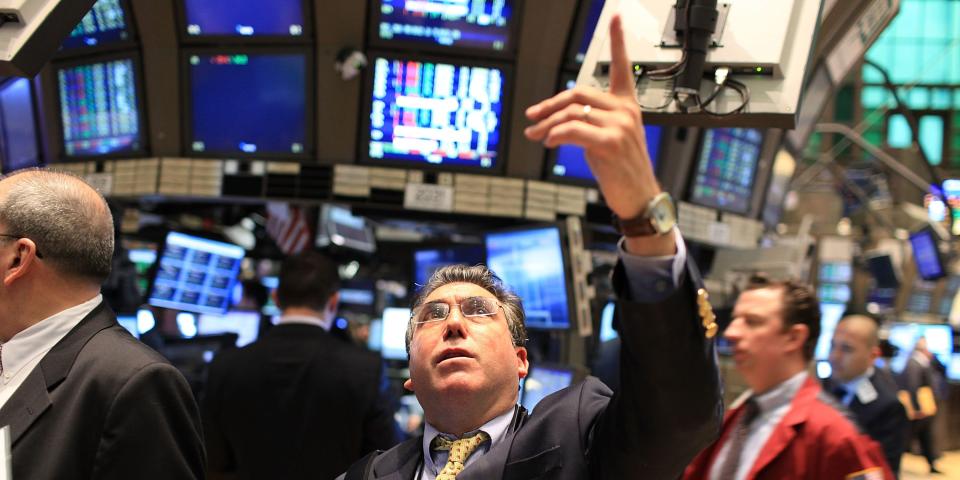A recession indicator flashing red for 23 straight months just reversed — and that's great news for stocks

A closely watched recession indicator has stopped flashing red after a 23-month decline.
The Leading Economic Index gained 0.1% month-over-month in February.
"The end of extended Conference Board LEI declines has generally been a positive signal for stocks," Carson Group said.
A closely watched recession indicator has stopped flashing red after a 23-month decline, and that's great news for stocks, according to Carson Group strategist Barry Gilbert.
The Conference Board's Leading Economic Index gained 0.1% month-over-month in February, ending a near two-year decline.
Sustained declines in the Leading Economic Index have historically foreshadowed an imminent recession, but this time around it looks like a recession will have been avoided as the Federal Reserve attempts to engineer a soft landing.
It's important to note that the Conference Board LEI is heavily weighted toward the goods economy and less so the service economy.
That's a problem when you consider that the makeup of today's economy is roughly 85% services, which is why the LEI has been trending negative for so long, as much of the strength in economic growth over the past year has been driven by services.
According to Carson Group, its internal Leading Economic Index, which puts a greater emphasis on the services economy, suggests trend growth for the economy through the rest of the year. That's in line with the Fed's GDPNow forecast of 2.1% growth in the first quarter.
From a stock market perspective, Carson Group crunched the numbers and found that the end of a decline in the LEI is typically followed by higher stock prices.
"The end of extended Conference Board LEI declines has generally been a positive signal for stocks," Gilbert said.
Gilbert pointed to previous LEI declines, including a 22-month decline in 1975 and a 24-month decline in 2009, that were followed by double-digit returns for the stock market over the next year.
"It is noteworthy that the end of these two longer streaks corresponded to the end of some longer recessions. That gives us added confidence that we are past near-term recessionary risk," Gilbert said.
The average one-year return for the S&P 500 after the LEI turned positive following a negative streak is 15.6% with a win ratio of 85.7%. The median one-year return is even higher, at 19.2%.
"The bottom line is that no matter which indicators you pay attention to, economic headwinds are slowly being taken out of play. Despite a strong first quarter so far for equities and the likelihood of bumps along the way, the outlook for stocks over the rest of the year still looks solid, whether looking at the macroeconomic backdrop or market history," Gilbert concluded.
Read the original article on Business Insider

 Yahoo Finance
Yahoo Finance 